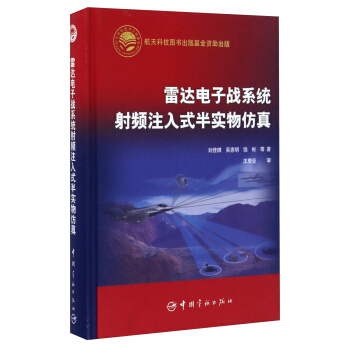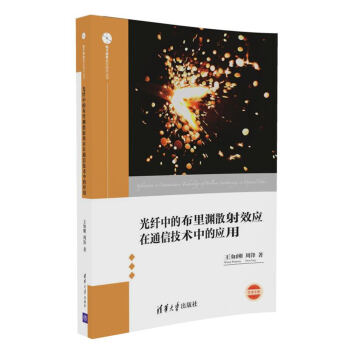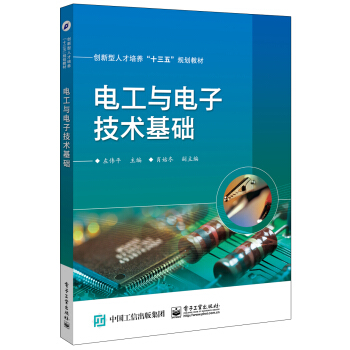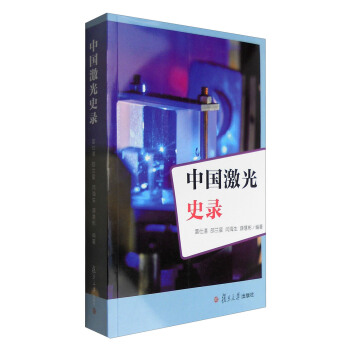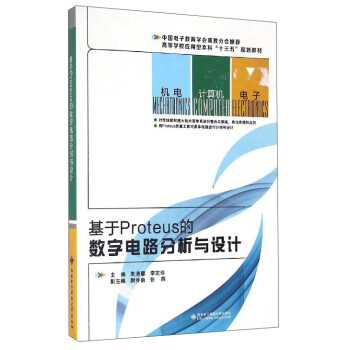

具体描述
内容简介
《基于Proteus的数字电路分析与设计》图文并茂、深入浅出地介绍了数字电路的有关知识。《基于Proteus的数字电路分析与设计》共分为9章,第1~4章为基础知识部分,主要介绍数字系统的概念、数制与码制、门电路以及组合逻辑代数;第5章为组合逻辑电路分析与设计,以Proteus为平台,以实际器件应用电路为载体进行电路分析;第6章和第7章分别为锁存器和触发器、时序逻辑电路的分析与设计,同样以Proteus为平台,介绍实际器件应用案例;第8章为脉冲波形发生器,介绍数字电路时钟波形的产生以及波形的整形;第9章介绍了模一数和数一模转换器。
《基于Proteus的数字电路分析与设计》可作为应用型本科院校计算机、机械、电子类等专业学生的数字电子技术基础教程,也可作为教师的教学参考用书,同时也可供从事电子线路设计的工程技术人员学习和参考。
目录
第1章 数字系统的概念(Concept of Digital System)1.0 概述(Introduction)
1.1 数字量和模拟量(Digital Quantity and Analog Quantity)
1.1.1 模拟量和模拟电信号(Analog Quantity and Analog Signal)
1.1.2 数字量和数字电信号(Digital Quantity and Digital Signal)
1.2 二进制数、逻辑电平和数字波形(Binary Numbers,Logic Levels and Digital Waveforms)
1.2.1 二进制数(Binary Numbers)
1.2.2 逻辑电平(Logic Levels)
1.2.3 数字波形(Digital Waveforms)
1.3 数据传输(Data Transmission)
1.4 基本逻辑运算(Basic Logic Operation)
1.5 基本逻辑功能(Basic Logic Function)
1.5.1 比较功能(Comparison Function)
1.5.2 算术功能(Arithmetic Function)
1.6 数字集成电路(Digital Integrated Circuit)
1.6.1 集成芯片封装(IC Package)
1.6.2 管脚序号(Pin Numbering)
1.6.3 集成电路分类(Integrated Circuit Classification)
1.6.4 集成电路技术(Integrated Circuit Technology)
第2章 数制与码制(The Numeration System and Code System)
2.0 概述(Introduction)
2.1 十进制数(Decimal Numbers)
2.2 二进制数(Binary Numbers)
2.2.1 二进制的表示方式(Binary Representations)
2.2.2 二进制的优点(Advantages of Binary)
2.2.3 二进制的波形图(Binary Waveform)
2.3 十进制一二进制转换(Decimal to Binary Conversion)
2.3.1 整数部分(Integral Part)
2.3.2 小数部分(Decimal Part)
2.4 十进制算术运算(Binary Arithmetic Operation)
2.4.1 二进制加法(Binary Addition)
2.4.2 二进制减法(Binary Subtraction)
2.4.3 二进制乘法和除法(Binary Multiplication and Division)
2.5 二进制数的反码和补码(One's Complement and Two's Complement of Binary Numbers)
2.5.1 有符号数(Signed Numbers)
2.5.2 反码和补码(One's Complement and Two's Complement)
2.5.3 补码的运算(Operation of Two's Complement)
2.5.4 溢出(Overflow)
2.6 八进制数(Octal Numbers)
2.6.1 八进制数的表示方法(Representation of Octal Numbers)
2.6.2 八进制数与二进制数、十进制数之间的转换(Conversion of Octal Numbers into Binary Numbers&Conversion; of 0ctal Numbers into Decimal Numbers)
2.7 十六进制数(Hexadecimal Numbers)
2.7.1 十六进制数的表示方法(Representation of Hexadecimal Numbers)
2.7.2 十六进制数与二进制数、十进制数之间的转换(Conversion of Hexadecimal Numbers into Binary Numbers&Conversion; of Hexadecimal Numbers into Decimal Numbers)
2.8 BCD码(Binary-Coded Decimal)
2.9 格雷码和ASCII码(Gray Code and ASCII Code)
2.9.1 格雷码(Gray Code)
2.9.2 ASCII码(ASCII Code)
习题(Exercises)
第3章 门电路(Gate Circuit)
3.0 概述(Introduction)
3.1 三极管的基本开关电路(Basic Switching Circuit of Triode)
3.1.1 双极型三极管的基本开关电路(Basic Switching Circuit of BJT)
3.1.2 MOSFET基本开关电路(MOSFET Basic Switching Circuit)
3.1.3 TTL和CMOS的逻辑电平标准(Standard of TTL&CMOS; Logic Levels)
3.2 TTL门电路的工作原理(Working Principle of TTL Gate Circuit)
3.2.1 TTL反相器(TTL Inverter)
3.2.2 TTL与非门(TTL AND-NOT Gate)
3.2.3 其它TTL门电路(Other TTL Gate Circuits)
3.3 CMOS门电路(CMOS Gate Circuit)
3.3.1 CMOS基本逻辑门电路(CMOS Basic Logic Gate Circuit)
3.3.2 带缓冲器的CMOS门电路(CMoS Gate Circuit with Buffer)
3.4 其它功能门电路(Gate Circuits of Other Functions)
3.4.1 CMOS传输门(CMOS Transmission Gate)
3.4.2 三态门(Three-state Gate)
3.4.3 集电极开路门(Open Collector Gate)
3.5 数字集成芯片实用常识(Practical Common Sense of Digital Integrated Chip)
3.5.1 数字集成芯片分类及命名(Classification and Nomenclature of Digital Integrated Chip)
3.5.2 数字集成芯片管脚的处理(Processing of Digital Integrated Chip Pin)
习题(Exercises)
第4章 组合逻辑代数(Combined Logic Algebra)
4.0 概述(Introduction)
4.1 布尔运算的定律和法则(Laws and Rules of Boolean Operation)
4.1.1 基本公式(Basic Formulas)
4.1.2 常用公式(Common Formulas)
4.1.3 逻辑代数的基本定理(Fundamental Theorem of Logical Algebra)
4.2 逻辑函数及其表示方法(Logic Function&It;'s Representation)
4.2.1 逻辑函数(Logic Function)
4.2.2 逻辑函数的表示方法(Representation of Logic Function)
4.2.3 逻辑函数形式的转换(Conversion of Logic Function Forms)
4.2.4 标准与或式和标准或与式(Standard AND-OR Form&Standard; OR-AND Form)
4.2.5 逻辑函数形式的变换(Variation of Logic Function Forms)
4.3 逻辑函数的化简方法(Approaches of Logic Function Simplification)
4.3.1 公式法化简(Simplifying Logic Algebra through Laws and Rules)
4.3.2 卡诺图法化简(Simplifying Logic Algebra through Karnaugh Maps)
4.4 具有约束的逻辑函数的化简(Simplification of Logic Function with Constraint)
4.4.1 约束项和约束条件(Constraint Term and Constraint Condition)
4.4.2 具有约束的逻辑函数的公式法化简(Simplification of Logic Function with Constraints through Laws and Rules)
4.4.3 具有约束的逻辑函数的卡诺图法化简(Simplification of Logic Function with Constraints through Karnaugh Maps)
习题(Exercises)
第5章 组合逻辑电路分析与设计(Analysis and Design of Combinational Logic Circuit)
5.0 概述(Introduction)
5.1 组合逻辑电路的分析和设计方法(Analysis and Design Method of Combinational Logic Circuit)
5.1.1 组合逻辑电路的分析方法(Analysis Method of Combinational Logic Circuit)
5.1.2 组合逻辑电路的设计方法(Design Method of ComBinational Logic Circuit)
5.2 常用组合逻辑集成芯片(Common Combinational Logic Integrated Chip)
5.2.1 编码器(Encoder)
5.2.2 译码器(Decoder)
5.2.3 数据分配器(Demultiplexer)
5.2.4 数据选择器(Multiplexer)
5.2.5 加法器(Adder)
5.2.6 全减器(Full Subtractor)
5.2.7 数据比较器(Data Comparator)
5.3 组合逻辑电路中的竞争和冒险(Competition and Adventure in Combinationa Logical Circuit)
5.3.1 产生竞争和冒险的原因(Causes of Competition and Adventure)
5.3.2 消除竞争和冒险的方法(Methods of Clearing Competition and Adventure)
5.4 总结(Summary)
习题(Exercises)
第6章 锁存器和触发器(Latchs and Flip-Flops)
6.0 概述(Introduction)
6.1 SR锁存器(SR Latch)
6.1.1 低电平输入有效的SR锁存器(SR Latch with Low Active Input Level)
6.1.2 高电平输入有效的SR锁存器(SR Latch with High Active Input Level)
6.1.3 SR锁存器的应用(Application of SR Latch)
6.2 触发器(Flip-Flops)
6.2.1 电平触发的触发器(Level Triggered Flip-Flops)
6.2.2 脉冲触发的触发器(Pulse Triggered Flip-Flops)
6.2.3 边沿触发的触发器(Edge Triggered Flip-Flops)
6.2.4 触发器功能汇总(Function Summary of Flip-Flops)
6.3 总结(Summary)
习题(Exercises)
第7章 时序逻辑电路的分析与设计(Analysis and Design of Sequential Logic Circuit)
7.0 概述(Introduction)
7.1 时序逻辑电路的分析方法(Analysis Methods of Sequential Logic Circuit)
7.1.1 同步时序逻辑电路的分析方法(Analysis Methods of Synchronous Sequential Logic Circuit)
7.1.2 异步时序逻辑电路的分析方法(Analysis Methods of Asynchronous Sequential Logic Circuit)
7.2 计数器(Counters)
7.2.1 异步计数器(Asynchronous Counter)
7.2.2 同步计数器(Synchronous Counter)
7.2.3 an/减计数器(Up/Down Counter)
7.2.4 任意进制计数器的集成芯片连接(Connection of Module-N Counter with Integrated Chip)
7.3 寄存器和移位寄存器(Register and Shift Register)
7.3.1 寄存器(Register)
7.3.2 移位寄存器(Shift Register)
7.4 环形计数器和扭环形计数器(Ring Counter and Twisted-Ring Counter)
7.4.1 环形计数器(Ring Counter)
7.4.2 扭环形计数器(Twisted-Ring Counter)
7.5 时序逻辑电路的设计方法(Design Methods of Sequential Logic Circuit)
7.5.1 顺序脉冲发生器的设计(Design of Sequence Pulse Generator)
7.5.2 序列信号发生器的设计(Design of Sequence Signal Generator)
7.5.3 同步时序逻辑电路的设计方法(Design Methods of Synchronous Sequential Logic Circuit)
7.5.4 异步时序逻辑电路的设计方法(Design Methods of Asynchronous Sequential Logic Circuit)
7.6 总结(Summary)
习题(Exercises)
第8章 脉冲波形发生器(Pulse Waveform Generator)
8.0 概述(Introduction)
8.1 施密特触发器(Schmitt Trigger)
8.1.1 门电路组成的施密特触发器(Schmitt Trigger with Gate Circuit)
8.1.2 CMOS集成施密特触发器(Integrated Schmitt Trigger with CMOS)
8.1.3 施密特触发器的应用(Application of Schmitt Trigger)
8.2 555定时器(555 Timer)
8.2.1 555定时器的工作原理(Working Principle of 555 Timer)
8.2.2 用555定时器构成的多谐振荡器(Multi-Vibrator with 555 Timer)
8.2.3 用555定时器构成的单稳态触发器(Mono-Stable Stable Trigger with 555 Tliner)
8.2.4 用555定时器构成的施密特触发器(Schmitt Trigger with of 555 Timer)
8.3 集成单稳态触发器(Integrated Mono-Stable Trigger)
8.3.1 用CMOS门电路组成的微分型单稳态触发器(Differential Mono-Stable Trigger Composed of CMOS Gate Circuit)
8.3.2 集成单稳态触发器(Integrated Mono-Stable Multi-Vibrator)
习题(Exercises)
第9章 模-数和数-模转换器(Analog to Digital and Digital to Analog Converters)
9.0 概述(Introduction)
9.1 A/D转换器(Analog to Digital Convertors)
9.1.1 A/D转换器的基本原理(Basic Principle of A/D Converter)
9.1.2 A/D转换器精度与转换速度(Precision and Speed of A/D Converter)
9.2 A/D转换器的应用与仿真(Application and Simulation of A/D Converter)
9.2.1 八位单极性并行输出ADC0808(ADC0808 with Unipolar Voltage Input and Parallel Output of Eight Bits)
9.2.2 双通道串行输出ADC0832(ADC0832 with Dual Channels Input and Serial Output)
9.2.3 双极性A/D转换器(A/D Converter with Bipolar Voltage Input)
9.3 D/A转换器(Digital to Analog Converter)
9.3.1 权电阻网络D/A转换器(D/A Converter with Weight Resistance Network)
9.3.2 倒T型电阻网络D/A转换器(D/A Converter with Inverted T Type Resistor Network)
9.3.3 权电流型D/A转换器(D/A Converter with Power Current Mode)
9.3.4 D/A转换器的转换精度(Conversion Accuracy of D/A Converter)
9.4 D/A转换器的应用与仿真(Application and Simulation of D/A Converter)
9.4.1 DAC0832
9.4.2 DAC0808
习题(Exercises)
参考文献
用户评价
深度剖析,智慧结晶 《基于Proteus的数字电路分析与设计》这本书,在我看来,绝对是数字电路领域的一部“智慧结晶”。它并非一本泛泛而谈的科普读物,而是对数字电路的分析和设计进行了极其深入和系统的剖析,并且巧妙地将其与Proteus仿真技术融为一体,为读者提供了一个全新的学习和实践维度。我之所以如此推崇这本书,是因为它展现了一种超越传统教材的深度和广度。 书中对数字电路的底层原理进行了非常精辟的阐述,不仅仅是讲解逻辑功能,还深入到了晶体管级对逻辑门的开关过程进行分析,并如何通过Proteus来观察这些细微的信号变化。这种“由表及里”的分析方式,让我对数字电路有了前所未有的深刻理解。特别是对于像状态机、流水线设计等复杂逻辑,书中不仅给出了清晰的设计流程,更重要的是,它能够通过Proteus的强大仿真能力,让你直观地感受到这些设计背后的精妙之处。 让我尤为赞赏的是,书中在分析和设计过程中,始终贯穿了一种“为什么”的精神。它不会仅仅告诉你“怎么做”,而是会详细解释“为什么这么做”,并且还会探讨不同的设计选择可能带来的优劣。例如,在设计ADC/DAC接口时,书中会分析不同采样率、分辨率和编码方式对系统性能的影响,并通过Proteus仿真来验证这些理论分析。这种严谨的分析态度,让我不仅学会了如何设计,更学会了如何去思考,如何去权衡,如何去做出最优的设计决策。这本书无疑是数字电路领域资深研究者和实践者的智慧沉淀,它不仅能够教会你知识,更能启发你的思维,让你成为一个真正有洞察力的数字电路设计者。
评分初窥门径,收获良多 这本《基于Proteus的数字电路分析与设计》真是为我打开了数字电路学习新世界的大门!我之前一直觉得数字电路这块理论知识非常抽象,尤其是那些逻辑门、时序电路之类的,总感觉隔着一层纸,难以真正理解其工作原理。而这本书,就像一把金钥匙,巧妙地将那些枯燥的理论与生动形象的Proteus仿真相结合。它没有一开始就抛出晦涩的公式和概念,而是循序渐进,从最基础的逻辑门电路入手,通过Proteus直观地展示了它们的工作状态,比如AND门在高电平输入时输出高电平,OR门只要有一个输入为高电平输出就为高电平,这比在纸上画图理解起来要容易得多。 更让我惊喜的是,书中对于各种组合逻辑电路和时序逻辑电路的设计过程描述得极其详尽。以一个简单的译码器为例,书中不仅给出了逻辑图,还详细讲解了如何在Proteus中搭建电路,选择元器件,设置输入输出,然后进行仿真分析。当看到自己设计的电路在仿真软件里按照预期工作时,那种成就感是无法言喻的。特别是对于一些复杂的触发器和计数器,书中通过大量的实例,一步步指导我如何从需求出发,设计出对应的电路,并验证其正确性。书中的图文并茂,很多电路图和仿真截图都非常清晰,即使是初学者也能轻松跟随。 这本书最大的亮点在于它强调“分析与设计”并重。它不仅仅是教你怎么画电路图,更重要的是让你理解电路为什么这样设计,以及在实际应用中可能遇到的问题。例如,在讲解状态机设计时,书中会分析不同状态转换的条件,以及如何通过状态转移图来指导电路实现。这种深入的分析,让我不仅仅是停留在“会用”层面,而是开始思考“为什么会这样”。而且,Proteus软件本身功能强大,书中对其中一些常用功能的介绍也恰到好处,让我能够快速上手,并将理论知识转化为实践能力。总而言之,这本书对于想要系统学习数字电路,并且希望能够通过仿真工具来加深理解和锻炼设计能力的读者来说,绝对是一本不可多得的好书。
评分拨云见日,设计之光 接触数字电路设计多年,一直以来都是在理论和实践之间摸索,偶尔也会遇到一些瓶颈,总感觉少了那么一点点“灵感”和“系统性”。直到翻阅这本《基于Proteus的数字电路分析与设计》,我才真正体会到“拨云见日”般的畅快。这本书的视角非常独特,它没有拘泥于纯粹的理论推导,也没有停留在简单的元器件介绍,而是将Proteus这个强大的仿真平台 as a bridge,将理论的严谨与设计的灵动完美地结合在一起。 书中对复杂数字系统设计的讲解,让我眼前一亮。不仅仅是列举一些经典的电路,更重要的是,它展示了如何运用系统化的方法来构建和分析大型数字系统。比如,在设计一个简易的微处理器模型时,书中会详细讲解指令集的设计、数据通路和控制单元的构建,以及如何利用Proteus进行整体的仿真验证。这种从宏观到微观,再回到宏观的分析方法,对于提升设计者的系统思维能力至关重要。我特别欣赏书中对一些常用总线接口和通信协议的仿真实现,这对于我了解实际的电子系统工作方式大有裨益。 更让我印象深刻的是,书中在讲解过程中,多次提及了在实际设计中可能遇到的“坑”。例如,在设计时序电路时,书中会提示如何避免竞争冒险,如何选择合适的时钟同步策略,以及如何进行时序分析。这些经验性的总结,是教科书上很难获得的宝贵财富,它让我在设计过程中少走了很多弯路。而且,书中对Proteus的运用也并非简单的“点到为止”,而是深入挖掘了其在不同设计场景下的应用,比如PCB布局前的初步验证,以及在调试过程中如何利用示波器、逻辑分析仪等虚拟仪器进行故障诊断。这本书为我提供了一个更具象化、更实践化的学习路径,让我能够将抽象的数字逻辑转化为可运行、可分析的模型,极大地提升了我的设计信心和解决问题的能力。
评分实践为王,创新之翼 一直以来,我都在寻找一本能够真正将数字电路理论与实践紧密结合的书籍,而《基于Proteus的数字电路分析与设计》无疑是我期待已久的答案。这本书的魅力在于它“实践为王”的理念,将Proteus这个强大的仿真工具作为核心,带领读者一步步探索数字电路的奥秘。我个人认为,对于学习数字电路而言,仅仅停留在理论层面是远远不够的,只有通过实际的动手操作和反复的仿真验证,才能真正理解电路的工作原理,并掌握设计的精髓。 书中大量的实例,覆盖了从基础逻辑门到复杂微处理器模型的方方面面,每一章都充满了实践性的指导。我尤其喜欢书中对于一些经典集成电路(如74系列芯片)的应用分析,不仅仅是简单地介绍其功能,而是通过Proteus仿真,详细展示了它们在实际电路中的工作流程和信号变化。这让我对这些“黑盒子”有了更深刻的认识。而且,书中在设计过程中,非常注重对各种设计约束的考虑,比如功耗、速度和面积优化。这些在实际工程设计中至关重要的因素,书中都有涉及,并通过仿真来演示不同的设计方案对这些指标的影响。 这本书还为我的创新思维注入了新的活力。通过书中提供的各种设计模板和方法论,我不再是那个只会照搬理论的“学生”,而是开始尝试着去优化和改进已有的设计,甚至尝试设计一些全新的功能模块。书中提供的仿真调试技巧,也让我能够更高效地找出设计中的bug,并进行快速迭代。它不仅仅是一本教材,更像是一个导师,引导我如何在Proteus这个平台上自由翱翔,用我的想象力去创造更多有意义的数字电路。我感觉这本书赋予了我“创新之翼”,让我能够将脑海中的想法,通过Proteus转化为触手可及的电路,并看到它们在虚拟世界里生动地运行,这对我来说是极大的鼓舞。
评分工程视角,应用为先 对于我们这些渴望将理论知识转化为实际工程应用的人来说,《基于Proteus的数字电路分析与设计》这本书简直是一股清流。它没有停留在书本的理论象牙塔里,而是从一个非常务实的“工程视角”出发,将Proteus这个强大的仿真平台作为核心工具,带领我们直奔“应用为先”的目标。 书中绝大多数的内容都紧密围绕着实际工程中的应用场景展开,例如,在讲解数字信号处理时,书中会模拟实际的通信系统,设计滤波器,并利用Proteus来验证其性能。又比如,在嵌入式系统设计的部分,书中会展示如何利用Proteus来仿真微控制器与外围硬件的交互,这对于我理解嵌入式开发的整个流程非常有帮助。我发现,这本书最大的优点在于它能够将那些看起来很“高大上”的数字电路概念,通过Proteus这个直观的工具,变得触手可及,并且能够立刻看到它们在模拟工程环境中的实际效果。 让我印象深刻的是,书中在讲解一些复杂电路时,并没有回避工程上的难点,反而会主动提及。例如,在设计PCB时,书中会涉及到一些布线规则和信号完整性的初步考量,虽然不是PCB设计本身的深入教程,但已经足够为我们建立起初步的工程意识。而且,书中对Proteus在调试过程中的应用讲解得非常到位,比如如何设置断点,如何观察信号波形,如何进行逻辑分析,这些都是在实际工程开发中不可或缺的技能。这本书让我明白,数字电路设计不仅仅是画图和仿真,更重要的是它能够被集成到实际的工程项目中,并发挥其应有的作用。它为我提供了一个非常好的平台,让我能够在进入实际工程开发之前,就拥有了丰富的实践经验和解决实际问题的能力。
相关图书
本站所有内容均为互联网搜索引擎提供的公开搜索信息,本站不存储任何数据与内容,任何内容与数据均与本站无关,如有需要请联系相关搜索引擎包括但不限于百度,google,bing,sogou 等
© 2025 book.idnshop.cc All Rights Reserved. 静思书屋 版权所有

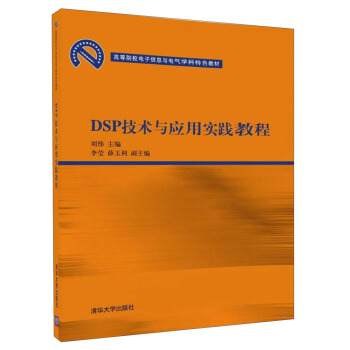

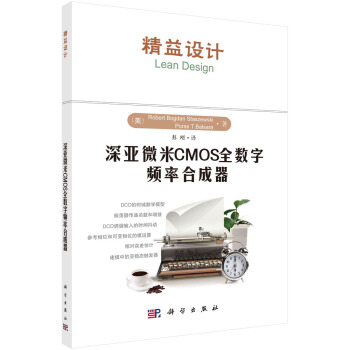
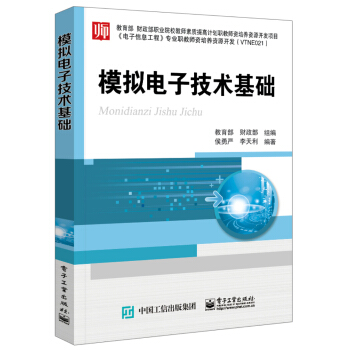
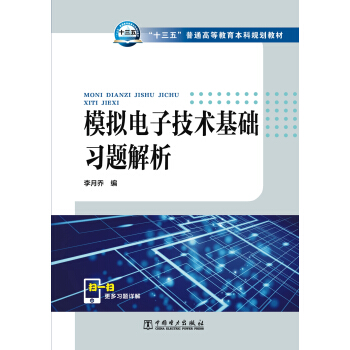
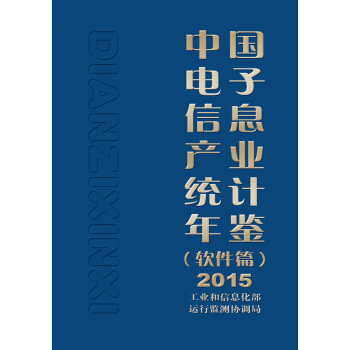

![介电体超晶格(上) [Superlattices and microstructures of dielectric materials] pdf epub mobi 电子书 下载](https://pic.tinynews.org/12091033/5938c4d0N36cb523c.jpg)

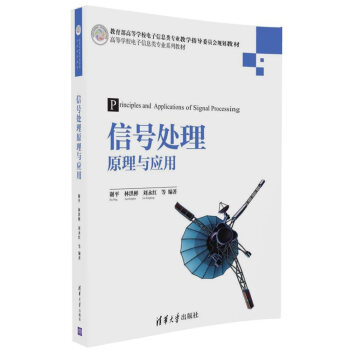

![量子图像处理及其应用 [Quantum Image Processing and Applications] pdf epub mobi 电子书 下载](https://pic.tinynews.org/12091702/586d171aN54fcb80f.jpg)
